Ryan Hall's Blog, page 220
September 13, 2016
Mikey Brannigan Wins Gold in Paralympic T20 1500 Final
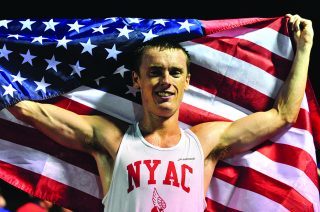
Photo: Prettysporty.com
American Mikey Brannigan won the T20 men’s 1500m race today at the 2016 Paralympics in Rio di Janeiro. Brannigan clocked a 55.89 final lap to distance himself from Poland’s Daniel Pek (silver in 3:56.17) and Iran’s Peyman Nasir Bazanjani (bronze in 3:56.24) to take the gold in 3:51.73.
The T20 classification is for athletes with an intellectual disability. Brannigan, who has autism, ran a 3:57.58 full mile at the Sir Walter Miler, held earlier this year in North Carolina. After a standout high school running career—which included a 4:03 mile in 2015—he started training as a member of Team USA as a Paralympic athlete. He has set numerous Paralympic records over the past several years.
RELATED: Generation Next: Influential and Inspiring Runners Under 30
The post Mikey Brannigan Wins Gold in Paralympic T20 1500 Final appeared first on Competitor.com.
Video: Four Paralympians Finish the 1,500m Faster Than Rio Olympic Gold Medalist
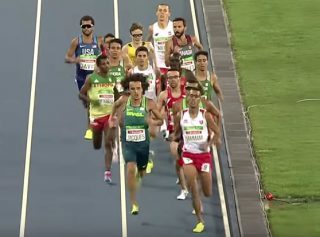
Not one, but four 1,500-meter runners in the T13 class (a category for the visually impaired) at the Paralympics finished faster than American Matthew Centrowitz, an able-bodied runner who won gold in the same event at the Rio Olympics a month ago.
The winner, Abdellatif Baka of Algeria, won the T13 1,500m final 1.7 seconds faster than Centrowitz, crossing the line in 3 minutes, 48.29 seconds (Centrowitz’s time stands at 3:50.00). Not only did Baka set a new Paralympic world record, but he also ran the fastest 1,500m time of both the Rio Olympic and Paralympic Games. (At the Paralympics there are two other classes for the visually impaired, T11 and T12, with the lower numbers ranking higher in impairment severity.)
RELATED: U.S. Track & Field Storms to Huge Success at Rio Olympics
In the tightly contested final, Ethiopia’s Tamiru Demisse earned second in a time of 3:48.49. The third and fourth place finishers—Kenya’s Henry Kirwa, 3:49.59, and Baka’s brother Fouad Baka, 3:49.84—also finished the distance faster than Centrowitz. That means any one of these four Paralympians could have contested for gold at the Rio Olympics. (It should be noted that Centrowitz prevailed in a classic sit-and-kick style final that was not likely to produce a blazing fast time.)
After winning, Baka said, “It wasn’t easy to get this gold medal. I’ve been working one or two years non-stop and it’s been very, very hard for me.”
The post Video: Four Paralympians Finish the 1,500m Faster Than Rio Olympic Gold Medalist appeared first on Competitor.com.
Spence Gracey Ready to Rock the Half in Philadelphia
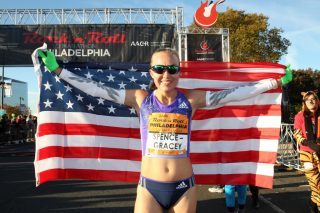
Neely Spence Gracey placed second at last year's Rock 'n' Roll Philadelphia Half Marathon in 1:09:58 and qualified for the 2016 U.S. Olympic Trials Marathon. She opted to make her debut at 26.2 miles in Boston last April. Photo: PhotoRun.net
Neely Spence Gracey’s goals before her debut marathon, which happened to be last April’s 120th Boston Marathon, were numerous.
There were the goals that fell under the KISS category (Keep It Simple Stupid)—finish the marathon, preferably standing up; enjoy the experience; be excited to come back for more.
There were the competitive goals. Place in the top 10, finish in 2 hours, 35 minutes.
Goals set. Goals accomplished. Spence Gracey finished ninth overall among the women in—get this—exactly 2 hours, 35 minutes.
And she loved the experience, despite throwing up immediately after crossing the finish line.
“The first thing I thought of was, ‘I hope the cameras aren’t on me,’” joked Spence Gracey regarding emptying her stomach. “Very unglamorous.”
But overall, the 26-year-old daughter of an Olympic marathon father, who was born on the day of the 1990 Boston Marathon, loved her first experience at the distance.
Taking a call while stretching in the pool at her Boulder, Colo., condo, Spence Gracey said, “When I look back at it, I’m super happy and want to do another one.”
Marathon number two will come Nov. 6 at the New York City Marathon. As a tune-up, she’ll return to the City of Brotherly Love for the American Association For Cancer Research (AACR) Rock ‘n’ Roll Philadelphia Half Marathon on Sept. 18. She placed second and set her PR of 1:09:58 last year, running on the day of Halloween.
Returning to its traditional mid-September weekend, AACR Rock ‘n’ Roll Philadelphia Half Marathon will send runners on a fast and familiar course for its 39th year. Five world records and three American records have been sealed at this race. The storied event, which also includes a 5K on Sept. 17, is known for live bands and fanfare, entertaining participants along the course. This year’s post-race Toyota Rock ‘n’ Roll Concert Series will be headlined by Guster.
When asked for the Cliff’s Notes version of what she learned from her marathon debut, Spence Gracey said, “I learned most likely it’s not going to go according to plan.”
Read blindly, the quotation would seem to be harbinger of negative experiences. Maybe the Wellesley co-eds’ screaming bursting Spence Gracey’s eardrums. Or her long blonde ponytail coming unraveled, tripping over a bobby pin and finishing the race with bloodied shins. Or needing motorized assistance to ascend Heartbreak Hill.
Nope. Spence Gracey was speaking of more positive possibilities, like when she was leading the race at the six-mile mark with fellow American Sarah Crouch.
“Never in my wildest imagination did I expect to lead the Boston Marathon at Mile 6,” said Spence Gracey. “It was different than any scenario I could have imagined.”
She was realistic, harboring no grandiose dreams that she might win the race.
“No, not at all,” she said.
That honor fell to Ethiopia’s Atsede Baysa, who finished nearly a mile ahead of Spence Gracey, in 2:29:19.
But the American reveled in the moment.
“In 20 years, I’ll look back at that experience (of the race) and what I’ll remember most is that feeling of leading the Boston Marathon.”
Another experience she didn’t plan: running by herself for miles late in the race. Yet that’s what happened from about Mile 18 on. When a lead group pulled away, she and Crouch basically ran together from Mile 7 through 18, alternating who was in front. But Crouch faded and Spence Gracey ventured into no-man’s land.
“I had no idea what place I was in,” she said. “It was just (thinking) ‘Focus forward.’”
At about Mile 21, she glanced at her watch, began doing math calculations and realized she had to average 5:40 miles the last five miles to meet her 2:35 goal.
“So,” she said, making it sound much simpler than it had to be, “that’s what I did.”
It was no easy task, given that Spence Gracey averaged 6:04 miles from Mile 13 through 22.
“The last 100 meters I was kicking it in,” she said. “I knew I was going to be real close. I also knew I was about to throw up the minute I crossed the finish line.”
Recovery has gone well. Spence Gracey placed fourth (first American) at the Peachtree 10K on July 4, in 33:25. She won the Humana Rock ‘n’ Roll Chicago Half Marathon 13 days later, in 1:12:26. That was nearly two minutes faster than her victory at the Humana Rock ‘n’ Roll New Orleans Half Marathon in February.
She recently finished sixth at the Falmouth Road Race (37:50), a 7-miler on Aug. 21, and then began training in earnest for AACR Rock ‘n’ Roll Philadelphia.
In addition to racing professionally, Spence Gracey coaches runners. Four of them train in Boulder, the others she coaches via the Internet. When her competitive days are history she could go to work for the Rock ‘n’ Roll Marathon Series, so passionate and genuine is she about supporting the series that emphasizes entertainment, participation and fun.
“I love the energy of Rock ‘n’ Roll races,” she said. “There’s nothing like being out there on the course and every mile having a band cheering you on. They always give you something during the race to pump you up and keep you going.
“Whether you’re an elite athlete or a first-time racer, it provides an awesome venue for everyone.”
It’s still too early for Spence Gracey to assign a time goal for New York and her second trip at the marathon distance. But, it’s easy to imagine that with one 26.2-miler in her memory bank, that she’ll press her foot on the accelerator harder this time.
“I wanted a positive experience (at Boston) and thought it was better to be conservative and come out on the other side feeling confident that there’s more in the tank and wanting to do another one versus having a bad experience and not being excited to do another one,” she said.
“I finished knowing I want to do a fall marathon. And I don’t want to let too much time pass before I forget all those lessons. I want to run another 26 miles while it’s relatively fresh in my mind.”
The post Spence Gracey Ready to Rock the Half in Philadelphia appeared first on Competitor.com.
Generation Next: Influential and Inspiring Runners Under 30
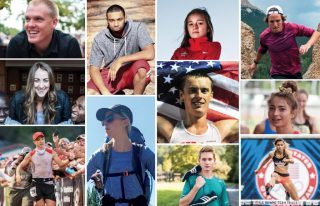
The next generation of running influencers is already here. The following trendsetters under 30 are shaping the present and future of running through ingenuity, creativity, bold decisions and beyond-their-years performances.
Also, compare this year’s list with our 2015 roundup of young runners.
The post Generation Next: Influential and Inspiring Runners Under 30 appeared first on Competitor.com.
September 12, 2016
Andrew Miller at the Leading Edge of Ultrarunning’s Youth Movement
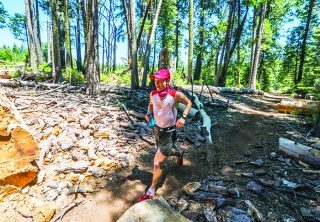
Andrew Miller ran smooth and smart en route to winning the Western States 100 in June to become the youngest winner in the 42-year history of the race. Photo: Paul Nelson
For as long as he can remember, Andrew Miller has felt at home in the mountains, on trails and in the woods.
All his life he’s backpacked with his family, sometimes for a week at a time in the rugged mountains of the Pacific Northwest and California’s Sierra Nevada. His idea of fun is scrambling up rocky slopes and looking for the next peak to conquer.
“I just like being outside like that for a long time and enjoying nature,” says Miller, from Corvallis, Ore.
It’s one of two reasons he says he fell in love with ultrarunning. The other?
“Just seeing how much I can push myself, and how well I can do,” he says.
So far, Miller has done quite well, pushing himself to unexpected heights. At just 20 years old, he’s on an ultra roll, winning three straight races and five of his past seven.
But it was his most recent victory, in California’s Western States 100-Mile Endurance Run on June 24, that earned attention.
Miller became the youngest winner in the history of America’s oldest 100-mile race, winning its 42nd edition in 15 hours, 39 minutes. In just his second 100-miler, Miller went in with a strategy and stuck with it.
“My angle was just to run fairly comfortably for most of the first half and try to run well for the second half, pick up the pace a little maybe, and try to catch some guys,” says Miller, who is a member of Salomon’s elite trail running team.
As the miles wound down, the strategy was working. Miller was in the top 10 after Mile 40 when he quickened his stride. He kept picking off runners and at one point thought he’d finish second. Leader Jim Walmsley seemed uncatchable, way out front on a record pace. But Walmsley took a wrong turn with about 20 miles to go and Miller took advantage. Once in the lead he got a burst of energy and cruised home with the win far ahead of runner-up Didrik Hermansen of Norway (16:16:08).
In a sport in which many of the best runners are in their 30s and 40s—he was one of only two twentysomethings in the top 13 men—Miller had by far his biggest victory. The sport has gotten younger in recent years with the likes of Anton Krupicka, Dakota Jones, Pete Kostelnick and Kilian Jornet among those who have turned the sport on its head in recent years. But none started off so successfully at such a young age.
“I definitely think most people were surprised I won, yeah,” he says, laughing. “Not a lot of people—I guess a few from back home—knew I was running pretty well and feeling pretty good. But yeah, I’d say 95 percent of the ultra community probably had no clue I was running as well or feeling as good as I was.”
RELATED: Pete Kostelnick Eyes the Ultimate American Running Record
Figuring it out
Andrew and his younger brother, Jacob, have followed in the footsteps of their mother, Anne, a self-described “midde-of-the-pack” ultrarunner. The boys used to follow her on their bikes when she went on training runs, then started tagging along on foot.
At 14, Andrew ran his first ultra with his mom, the McKenzie River 50K, finishing 117th in 6:13:26. The next year he did the McDonald Forest 50K with her, running 6:17:32.
“For some reason, it was after that second one that I was hooked,” he says. He recalls thinking, “I really want to do this.”
It was about that time Anne could see her son’s potential. Because of his age, race directors required mother and son to run together. By the second race she says, “I was probably holding him up.”
Miller played three years of soccer in high school, but didn’t run cross country or track. He preferred to run on his own. At 16, he won his first ultra, the McKenzie River 50-miler in 7 hours, 12 minutes. By 18, he had won a handful of 50- to 100-kilometer races, as well as the 68-mile Georgia Death Race in early 2015.
Since June of 2015 he won the Bighorn 100-miler, setting a record of 18:29:37, and then the Georgia Death Race again in March of this year to earn a spot at Western States.
He says he’s “figured it out” the past two years.
He’s learned what training works best for him. He went from doing mostly long, slow runs to adding a lot of shorter, faster workouts.
“I’ve never done any traditional speed work, like going to the track, but I’ll do some hill repeats, or just run hard up a hill or two or three hills in a run, just to get running faster,” says Miller, who works his training around classes and homework at Northern Arizona University in Flagstaff. “I really think adding that variety, not only to get the speed but also to get your body to adapt to a lot of different types of running, has really helped.”
Plus, Miller is an analytical sort. He likes to study and prepare. Anne Miller says by the time her son was at the starting line for Western States, he knew the history of every top runner there and where on the course he planned to go hard or take it easy.
“Andrew does nothing that’s not calculated,” she says.
He’s also an exercise science major, entering his sophomore year. That’s helped him better understand how his body functions in training and during the middle of a run.
Miller is looking next at the North Face 50-miler in December. Between now and then, he might also take a crack at trying to break Rob Krar’s best-known time of 6 hours, 21 minutes, 47 seconds in running the 42-mile rim-to-rim-to-rim route at the Grand Canyon.
“We’ll see how I’m feeling,” he says. “He ran a really, really fast time.”
At 5-foot-4 and about 125 pounds, Miller isn’t imposing by any means. Other top ultra marathoners are taller, older or have more experience. But he believes his preparation and mindset are his strengths. He actually embraces the pain that sets in late in races when his legs and mind are exhausted.
“You want to quit but it’s kind of fun to overcome that and tell yourself to keep going,” he says. “It’s fun to take on that challenge and convince yourself to keep going … to keep running fast.
“When it all comes together at the end, if you can finish strong, finish well and be happy with your run, it’s just really cool.”
The post Andrew Miller at the Leading Edge of Ultrarunning’s Youth Movement appeared first on Competitor.com.
Pete Kostelnick Eyes The Ultimate American Running Record
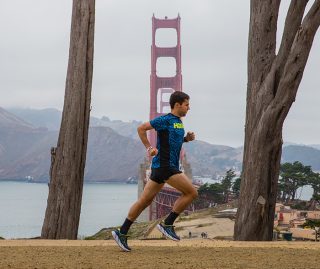
Ultrarunner Pete Kostelnick, shown here during a recent training run, set out from San Francisco on Sept. 12 with the intent of running across the U.S. in record time. Photo: Justin Britton/Hoka One One
Nikki Kostelnick says her husband, Pete, has an addictive personality and a passion for planning. If he wants to be good at something, he doesn’t hold back. Plus, he’ll have a detailed game plan. His heart and brain run stride-for-stride.
“So I guess it’s not terribly surprising that he went crazy with the running,” she says, laughing.
As an ultrarunner, Pete—a financial analyst in Lincoln, Neb.—learns, tinkers and evolves. Nikki says he’s constantly making lists and creating Excel spreadsheets. He charts out training sessions, nutrition schedules and race strategy.
“It’s funny, but it works for him,” she says.
Certainly, that’s what the results say.
Kostelnick, 28, has hit his stride. In 2015 he won the Styr Labs Badwater 135 Ultramarathon in Death Valley, then followed it up with victories in the Kansas Fall Ultra Extravaganza 100-miler in October and the Desert Solstice 24-Hour race in Phoenix in December, covering 163.68 miles.
In July he repeated at Badwater, becoming the first to complete the course in under 22 hours. His 21:56:32 crushed his 23:27:10 of 2015. He became the first man to win back-to-back since Scott Jurek in 2005-06.
As an encore (or is it the main event?), he’s going to try to run 3,063 miles from San Francisco to New York faster than anyone ever has. He started on the morning of Sept. 12 from San Francisco City Hall, with the goal of breaking the record of 46 days, 8 hours and 36 minutes set 36 years ago by Frank Giannino Jr.
His lofty target is to run about 70 miles a day. It’s more planning, logistics (with a crew of three and two cars, plus stringent verification requirements) and spreadsheets to go after a record many have failed to break. (It also takes a lot of shoes. He’ll be wearing Hoka One One Clifton 3 shoes, but alternating through at least eight pairs.)
“I always tell her (Nikki), I’m not going to be this crazy forever,” says Pete,who will move to Hannibal, Mo., to join his wife after the trek. “She hears it, but she knew before I did that I would get this crazy. She knows my temperament and my competitive nature.”
RELATED: Karl Meltzer Still on Track for Appalachian Trail Record
But before going cross-continent, Kostelnick’s focus for 2016 was to go after the Badwater record of 22:51:29 set by Valmir Nunes in 2007. He ran only one other race in seven months, consistently logged weeks of 150 to 200 miles and then executed a revised strategy that incorporated fewer stops with a less aggressive start.
“I did a lot of planning on how I could really minimize any stopping this year,” he says. “Just even to the point that I wouldn’t stop for food, ever. That’s what saved me a lot of time. Last year I probably was stationary for at least 40 to 45 minutes, and this year, besides two bathroom breaks that only took about a minute each, I was moving the entire race.”
It was an idea he’d considered for a while. From experience he knew how hard it was to get going after resting.
“The laws of physics,” he says. “You just keep moving, it’s a lot easier than stopping and starting.”
Also, he felt he could stay stronger later in the race with a slower starting pace. In 2015, he did 7:30- to 8-minute miles early. This year, he slowed to an 8:15-8:30 pace.
Kyle Clouston, a running partner who has crewed for him three years at Badwater, said that pace made a difference, as did a plan to cool him off more quickly (going to sleeves and an iced bandana earlier). Kostelnick was stronger later.
“I think he ran a smarter race,” Clouston says. But, he added, the foundation for it all is Kostelnick’s training regimen.
“I think there’s probably natural God-given talent … but when he gets down to it and puts in 200 miles a week, to watch his improvement over the last couple of years, with how hard he works, I think that’s what makes him a good runner, too.”
RELATED: Andrew Miller at the Leading Edge of Ultrarunning’s Youth Movement
Unlikely Ultra Man
There was nothing in Kostelnick’s history that indicated he’d be an ultrarunner, let alone a good one.
He didn’t go out for track or cross country at his Iowa high school until his junior year and didn’t make varsity until senior year. At Iowa State he stopped running and ballooned from 160 pounds to 200-plus on his 5-foot-9 frame. At one point he remembers reading an article about the Badwater and telling friends it was “absurd”—even though he was fascinated by it.
While serving an internship in Washington, D.C., his senior year, he got “into the marathon buzz,” started to train again, and completed his first 26.2-miler. When he met Nikki—a runner who pulled him further into it—the hook was set.
He eventually qualified for Boston, had a PR of 2:41 and did about a dozen marathons. His first ultra was the solo division of a 44-mile relay from Kansas City to Lawrence.
RELATED: 6 Tips to Get Through Your First Ultramarathon
“I thought it would be kind of cool if I could tell my grandkids I ran a relay race all the way from one city to another,” he says. Instead, it was just the first of 27 ultras.
He says he reached a new level the past two years by almost doubling his mileage per week. He never misses a day. At 200 miles per week—with long runs of 40-plus miles on Saturdays and Sundays—he says his fitness is far better.
Plus, he switched to a better shoe and began to pay attention to nutrition for the first time. Before 2015 he hadn’t used supplements or thought about electrolytes or salt. In races, he ate when he felt like it. Now he does an eating schedule, with foods targeted for what he’ll need at that point in the race. He’s also lost 15-20 pounds, lowering his weight to the 135-140 range.
RELATED: Taking the Challenge of Running the Grand Canyon Rim to Rim to Rim
With his base of big miles, he’s confident he can complete his cross-country run and threaten the record. It’s been on his mind since he first spoke with ultra legend Marshall Ulrich about it in 2011.
Ulrich, a legend in the ultrarunning world for his numerous achievements, went for Giannino’s record in 2008, albeit at the age of 57. But he came up a tad short as he crossed the country in just over 52 days in what was the third-fastest across-the-U.S. run at the time (and a new record for both the over-40 masters and over-50 grand masters age divisions).
Kostelnick knew he wasn’t capable of attempting it five years ago. With some success and better fitness, he’s believes he’s ready.
Nikki never doubted he’d go for it.
“Because he said he wasn’t going to do it,” she says. “Usually if he says that, it means he’s going to do it. If it’s something crazy, he’s always going to be up for some crazy challenge.”
RELATED: Do Something Epic: Test Your Limits with an Unsupported Adventure Run
RELATED: Scenes from the 135-Mile Badwater Ultra
The post Pete Kostelnick Eyes The Ultimate American Running Record appeared first on Competitor.com.
8 Ways to Tone Down Your Inner Running Nerd

Photo: Shutterstock.com
Running is a glorious thing. It’s incredibly simple, yet intensely demanding. The gear requirements are minimal, it can be done almost anywhere and it brings remarkable health benefits for both the body and the mind.
While all of that is undeniably accurate, it’s also fair to say that we runners tend to go a bit overboard with our enthusiasm. Some of us may have a tendency to drone on a bit too long about our race splits. Or, we may get a little obsessive about detailing the specifics of our latest injuries to friends and family members. Any runner can experience oversights like these from time to time, but if they occur with daily, hourly or even minute-to-minute frequency, it could be a problem.
Avoid these pitfalls when discussing these common running topics and you will be safe from eternal running geek-dom.
1. Shoe Talk
Just about everyone wears shoes (unless you’re at a Phish show), but only runners feel the need to obsess about each and every element of their footwear. If you find yourself linking more than two consecutive sentences that contain terms like “medial posting” or “asymmetrical lacing” please take a pause and let someone else guide the conversation for a while.
RELATED: 20 Things You Probably Didn’t Know About Running Shoes
2. Heart Rate
Heart rate monitoring is an effective tool for guiding and controlling your workouts. Talking about heart rate monitoring is an effective tool for making other people’s eyes glaze over and wander away from you.
RELATED: The Right Way to Train With a Heart Rate Monitor
3. Nutrition Insights
Have you tried this line on a date? “I’ll order for both of us—we’ll have a 60/20/20 ratio of carbohydrates, protein and high-quality fats. Otherwise, it’s the chef’s choice!” If you suspect you’ve been offering too much dietary advice to your companions you almost certainly have, so just stop it.
RELATED: Why Social Meals Are Better for Your Health
4. Inappropriate Stretching
True story: I (a self-prescribed running nerd) once attended a class for expecting couples with my wife. When the instructor covered breathing techniques for mothers to use during delivery, I found the deep breaths useful as I began stretching a tight hamstring. My wife was not even slightly impressed.
RELATED: Yoga for Runners: Proper Breathing
5. Cross-Training
News flash! Many people choose to participate in sports other than running—to them their favorite activity is not “cross-training” but rather a distinct and enjoyable sport. Crazy, right? Be sure to acknowledge that any activity from adult-league soccer to Zen meditation can be done for its own sake, regardless of whether it’s likely to improve one’s 10K time.
RELATED: What Kinds of Cross-Training are Best for Runners?
6. Digital Watches
The key here is the plural form, “watches.” A running watch offers a simple and reliable tool that can benefit any runner. But if you own multiple wrist-mounted computers and routinely swap them out for different types of workouts you may be slipping into nerd mode. If you wear them simultaneously it’s probably too late for you.
RELATED: 7 Things to Know About GPS Watches
7. Family Time
Your family loves you unconditionally. They love what running does for your physical health, and that it makes you happy. That does not mean, though, that they want to schedule every holiday, vacation and excursion around your training schedule. Try curtailing a long run and make it to Jenny’s basketball game on time for once, OK?
RELATED: Chasing Leia: One Family’s Star Wars Half Marathon Weekend Experience
8. Message Boards
Running message boards are great for sharing training information, discussing race results and staying connected to other runners. Unless, of course, they devolve into cesspools of disparagement, empty boasting and mean-spirited exchanges. If you find yourself logging onto online running forums in a good mood and leaving the discussions ready to weep for mankind, try taking a break from them … for the rest of your life.
RELATED: Online Safety and Workouts: What Should You Really Be Worried About?
The post 8 Ways to Tone Down Your Inner Running Nerd appeared first on Competitor.com.
September 8, 2016
Video: 72-Year-Old Has Unforgettable Finish at the Western States 100
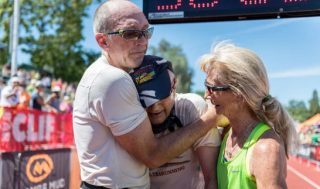
This past June, 72-year-old Wally Hesseltine ran the Western States 100-Mile Endurance Run. He was set to be the race’s oldest finisher ever since its start in 1974. “Thirty Hours,” a 12-minute documentary directed by Alex Massey, showcases Hesseltine’s training leading up to the race, the race day itself and his unforgettable finish as he stumbled onto the Placer High School track with 400 meters to run and 2 minutes left on the clock.
The post Video: 72-Year-Old Has Unforgettable Finish at the Western States 100 appeared first on Competitor.com.
Newton Running Unveils 2016 Kona and Chicago Special Edition Shoes
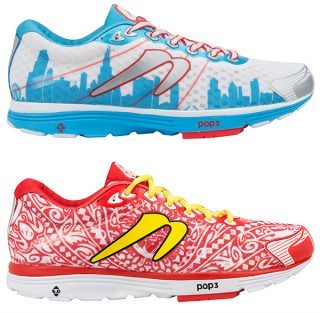
Both the Chicago (top) and Kona (bottom) versions of the Newton Aha will sell for $125.
Newton Running has announced the release of special editions of its Aha shoes for the Ironman World Championships on Oct. 8 in Kona, Hawaii, and the Chicago Marathon on Oct. 9. Both shoes will be sold for $125 at NewtonRunning.com beginning in early October, as well as at the Newton booth at each of the respective events. Big Island Running in Hawaii will also sell the Kona version of the shoe.
The Kona shoe features a bold red and white Hawaiian design with yellow laces and a yellow Newton logo, while the Chicago shoe has a design inspired by the Chicago flag and skyline. Both versions feature Newton’s five-lug P.O.P. 3 platform for a soft, yet energetic ride and a 6mm heel-toe offset. Each model weighs 9.0 oz. for men’s size 9.0 and 7.4 oz. for a women’s size 7.0.
The post Newton Running Unveils 2016 Kona and Chicago Special Edition Shoes appeared first on Competitor.com.
Women’s Running Pioneer Kathrine Switzer Returning to Boston Marathon
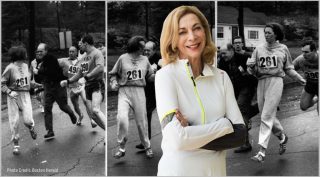
Kathrine Switzer stands in front of a photo mural showing the famous scene from the 1967 Boston Marathon.
Kathrine Switzer is heading back to the Boston Marathon next year. The women’s running pioneer, accomplished marathoner, author and entrepreneur will be running the race to celebrate 50 years of her historic 1967 Boston Marathon finish.
On April 19, 1967, Switzer made history by pinning on an official race bib and running the Boston Marathon at a time when the marathon was a male-only event. She had signed up as K.V. Switzer and was issued a bib number (No. 261), although the Boston Athletic Association later said it was an “oversight” in the entry screening process, and she was treated as an interloper when the error was discovered on race day.
Co-race director Jock Semple famously tried to push her off the course during the race, but he was thwarted by her boyfriend and running partner Tom Miller and Switzer continued running. The incident made international headlines after Switzer became the first woman to finish the race (in about 4:20) with an official race bib and helped continue the movement to allow women to participate in running events and other sports. (Bobbi Gibb is credited as being the first woman to run the entire Boston Marathon in 1966 when she snuck into the race and ran as an unregistered runner. The Boston Marathon didn’t allow women to officially enter until 1972.)
Next April, as part of the the B.A.A.’s yearlong 50th anniversary celebration to honor women running pioneers, Switzer will lace up her shoes once again, pin on an official bib and run the 121st Boston Marathon. This time, she will be running with a team of women representing her new global non-profit, 261 Fearless, Inc.
“It is an honor and joy to participate in the 121st Boston Marathon,” said Switzer, who will turn 70 in January. “What was a dramatic incident 50 years ago when angry race co-director Jock Semple tried to throw me off the course for being a girl, became instead a defining moment for me and women runners throughout the world. The result is nothing less than a social revolution; there are now more women runners in the United States than men.”
Despite this inauspicious beginning, the Boston Athletic Association (BAA) early on realized the seriousness of women’s desire to participate and the potential of their endurance. In 1972, five years after the “Switzer Incident,” the BAA welcomed women as official competitors. Switzer finished third in that race and would go on to run Boston eight times, posting her personal best of 2:51:37 in the 1975 edition. Boston was the first major marathon to admit women; its acceptance in 1972 helped open the floodgates for women’s participation globally.
“We are so pleased to welcome back Kathrine to the race which elevated and hastened the movement in women’s sports,” said B.A.A. President Joann Flaminio. “She has always been a fearless woman, and we look forward to concluding our year-long ’50 Years of Women at Boston’ celebration when we greet her at the finish line next April 17.”
RELATED: Recalling Bobbi Gibb’s Historic 1966 Boston Marathon
After an instrumental career of racing, event directing and television commentary—including 30 consecutive years of broadcasting Boston for local CBS affiliate WBZ-TV, Switzer decided to launch 261 Fearless, Inc., a global non-profit aimed to empower and connect women through running. Active communication platforms, a series of running clubs, events, training and merchandizing align to create a unique women’s community that helps them to overcome life obstacles and embrace healthy living. The community unites under the number, 261 which is the bib number Switzer boldly donned as she ran the Boston Marathon 50 years ago.
The B.A.A. has granted 261 Fearless a limited number of invitational bibs for the 2017 Boston Marathon to be used exclusively for fundraising purposes to further the mission and programs. The women who are accepted onto Team 261 Fearless will start the race with Switzer.
The post Women’s Running Pioneer Kathrine Switzer Returning to Boston Marathon appeared first on Competitor.com.
Ryan Hall's Blog
- Ryan Hall's profile
- 21 followers



